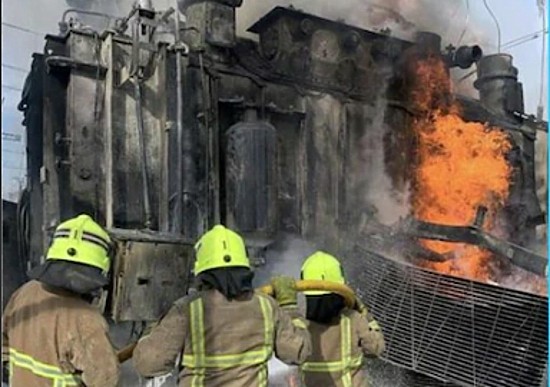There are a number of articles that have come out since the Russians invaded Ukraine this last year. The discussions tend to be about what generals are learning about the conduct of future wars, about preserving culture and identity in the face of aggression, or about industry, agriculture, and commerce staying alive in the face of continuous missile and drone attacks.
After losing the initiative in its attempts to seize Kyiv in the early days of the assault, and because of Ukraine’s military pushback against Russian forces in Eastern Ukraine, Russia has resorted to attacking civilian targets and focusing on the country’s energy infrastructure.
In Russia’s past efforts to destabilize Ukraine, the power grid was targeted by cyberattacks. At the outset of the 2022 invasion, Russia attempted a cyber assault. But Ukraine had learned from the 2014 Crimea invasion which was accompanied by cyberattacks and hardened its grid security to block the Russian assault. Ukraine did this by distributing its network management infrastructure to be able to restart damaged systems by isolating those still working and operating them locally. Now Russia is using missiles and drones to destroy as much of the grid infrastructure as it can in the hope it will force the hand of the Ukrainian government to ask for terms.
In anticipation of future Russian aggression back in 2017, Ukraine began to disconnect its power grid from its neighbour. On February 24, 2022, the day Russia invaded the country, Ukrenergo, the national grid operator was running a trial disconnection from Russia’s grid and doing a synchronization test with the European Network of Transmission System Operators for Electricity (ENTSO-E). Since March 16, 2022, Ukraine’s grid is now linked to ENTSO-E and no longer to Russia.
Russian missiles, shelling and drones continue to try to sever the European link and destroy the distribution of electricity within the country. As one part of the grid goes down after an attack, Ukrenergo, while it does emergency repairs, has resorted to rolling blackouts to give people heat and light for at least part of the time in the face of winter cold and darkness. Each attack, stated Ukrenergo recently, is making it harder to repair the grid. In the face of this assault, the Ukrainian government asked businesses to go dark so that homes in Kyiv and elsewhere could stay lit during Christmas and the New Year celebration.
Ukraine also is home to four operating nuclear power plants with 15 pressurized water reactors of Russian design. Energoatom is the country’s nuclear energy operator. Two nuclear sites were overrun by Russian forces in the early days of the war, the first, Chornobyl, where the Soviet Union’s worst nuclear disaster occurred back in 1986. Today, Chornobyl is not operational although it is used as a storage area for spent nuclear fuel. The second, Zaporizhzhya, is the largest nuclear power plant in Europe. Zaporizhzhya has suffered damage in the fighting and Russian occupiers continue to try and sever its link to Ukraine’s grid. One operating 750-kilovolt line remains with the intergovernmental Nuclear Energy Agency having established observers on site to monitor the health and safety of the plant operating in war conditions.
One lesson to learn from Russia’s attack on Ukraine’s power infrastructure is that electricity coming almost exclusively from a national operator over the grid can prove to be the Achilles’ heel for a country.
In hindsight, as Ukraine back in 2017 was figuring out ways to disconnect from Russia’s power grid, it may have considered implementing a policy to encourage the building of distributed energy based on renewable sources such as rooftop solar and geothermal installations. Where the debate about distributed energy has tended to focus on how utilities can accommodate distributed energy being fed to the grid, in the future, there should be a second conversation. It should be about grid vulnerability to cyberattacks and physical bombardment in the event of war. Countries and utilities need to learn from the Ukraine experience and develop distributed energy strategies to keep the heat and lights on.
















